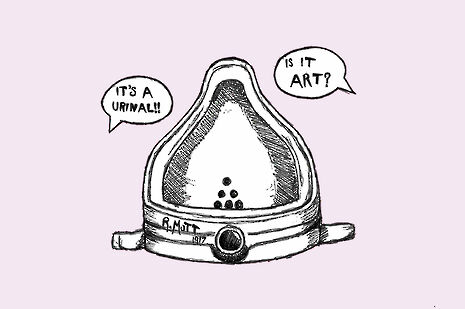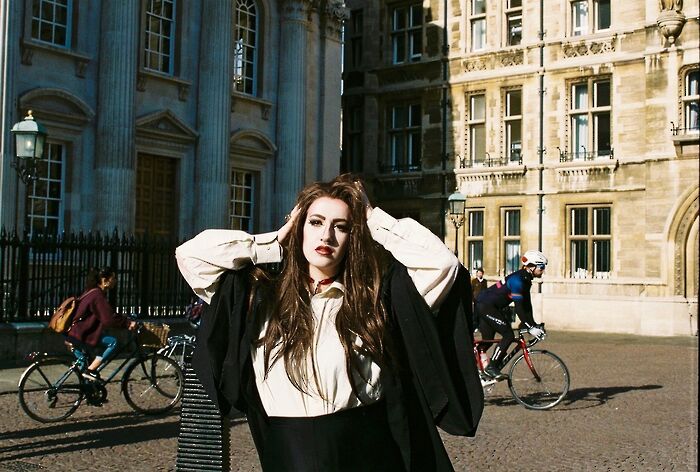What is art? Fountain and the beauty in the mundane
Looking at Marcel Duchamp’s Fountain, Emma Morgan discusses what “art” actually means

In 1917, the artist Marcel Duchamp submitted a piece called Fountain to the Parisian Salon des Indépendants for exhibition. The proposed artwork consisted simply of an upturned urinal, with the mysterious words ‘R. Mutt 1917’ scribbled on its side. Perhaps unsurprisingly, the Salon’s board of directors judged it to be a display not of artistry, but of indecency, and it was refused entry to the exhibition. How could Duchamp really claim that this “ready made” object was his own work, when he had had no hand in producing it? And did he really expect everyone else to believe that this run-of-the-mill urinal was art, just because he said it was?
The Salon’s decision to deny Fountain gallery space caused Duchamp to resign from the board in protest, an action which draped the whole exhibition in controversy, and imbued the piece itself with a symbolic political significance. That urinal became a stand against censorship in art, a campaign for inclusivity, demanding that galleries open their doors to a more challenging and varied range of pieces.
“Surely it’s lazy to label the two ends of the creative spectrum with the same word? There must be some elusive quality lying within them”
The unspectacular item which Duchamp seemed to have selected and presented so unthinkingly became a hugely thought-provoking and enduring work in the history of art. And maybe that was his goal all along; maybe he wanted to show that even the most commonplace of objects could somehow prove to be just as memorable and significant as the radiance of a Turner sunset or the loving detail of Rembrandt’s portraits. For while these works are known for their striking beauty, a beauty which seems to sew the contours of real life into the canvas, Fountain stands out for its capacity to inspire debate. It may have taken a tiny fraction of the time and precision invested into paintings such as Boticelli’s The Birth of Venus (1486), but somehow, it appears to be a more challenging work, as its unapologetic plainness forces the viewer to work with the artist to decipher its meaning.
While practitioners of fine art present us with the finished products of their craftsmanship, conceptual artists such as Duchamp draw us into dialogue with their work, encouraging us to complete its basic forms with our own ideas. Both approaches clearly have their own creative value then, but they also employ widely differing techniques, styles and effects, which create a seemingly unbridgeable gulf between them. And it’s with this difficulty that the recurring debate begins: which one of them is the real deal? What is art, exactly?
“It doesn’t matter whether it is an arrestingly beautiful portrait, or simply a plain black canvas: art is only art if it reaches out from itself to touch you”
One dictionary definition states that ‘art’ consists of “creating paintings, sculptures, and other pictures or objects for people to look at and admire or think deeply about”. This insistence on an either/or between aesthetic admiration and intellectual reflection suggests that even the dictionary is confused about what art really is.
Surely it’s lazy to label the two ends of the creative spectrum with the same word? There must be some elusive quality lying within them, which somehow draws them together despite the gulf of their difference. And perhaps that ‘thing’ could be described as human contact.
It doesn’t matter whether it is an arrestingly beautiful portrait, or simply a plain black canvas: art is only art if it reaches out from itself to touch you. Its loveliness or its sadness or its thought-provoking starkness must carve out a little space for itself in your mind and stay there, ready to be seen and examined again and again. If we see that as the central criterion of an artwork, then its definition becomes at once universal and highly personal, a question of emotional attachments which allows anyone and everyone to judge creative pieces for themselves.
If we look at it in that way, the whole world can become an art gallery. A shelf filled with carefully ordered books, a neatly written word tried out on the tongue, a graceful hand movement, a perfect curve of eyeliner, the symmetry of a solved equation, the mess of a desk full of papers... If it makes you smile slightly or if your mind keeps tripping back to its shapes and signs, then it’s art. I think that that’s what makes Fountain so unexpectedly satisfying and rich: apart from its capacity to generate debate, the weirdness of the object’s normality also forces you to step back and re-evaluate the elitist boundaries and limits of artistry.
Duchamp’s work allows us to see the creative potential in the everyday, and reminds us that even ostensibly mundane items or images can move, influence and inspire us.
 News / Local business in trademark battle with Uni over use of ‘Cambridge’17 January 2026
News / Local business in trademark battle with Uni over use of ‘Cambridge’17 January 2026 News / Cambridge bus strikes continue into new year16 January 2026
News / Cambridge bus strikes continue into new year16 January 2026 Comment / Fine, you’re more stressed than I am – you win?18 January 2026
Comment / Fine, you’re more stressed than I am – you win?18 January 2026 News / News in Brief: cosmic connections, celebrity chefs, and ice-cold competition18 January 2026
News / News in Brief: cosmic connections, celebrity chefs, and ice-cold competition18 January 2026 Film & TV / Anticipating Christopher Nolan’s The Odyssey17 January 2026
Film & TV / Anticipating Christopher Nolan’s The Odyssey17 January 2026










